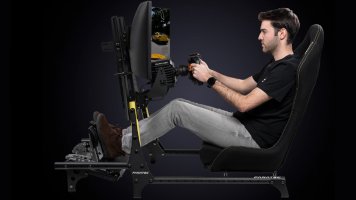Hi,
I currently use a headset for simracing and -driving.
But I'd really like to put my subwoofer to good work and also enjoy the comfort of a free head by using speakers (studio monitors). The question is: Can I also get a microphone to work in that setup?
I've read about cardiodic mics that primarily pick up sound from one direction while restricting sound from other directions. There are also "shotgun" microphones that are supposedly even better at restricting sound from other directions *and* can be placed further away. Placing them further away would be nice because they wouldn't invade my field of view - I'm using a triple screen setup - and they wouldn't be in the way when flailing with my arms around my wheel, shifter, brake and button box.
But how much sound would those microphones pick up from the speakers placed either behind or to the side of the mic, depending on the location of the mic being either in the center between me and the speakers or coming in from the side at an angle pointing at my face?
Would the sound pickup from my speakers be either non existent or at least low enough that software noise filters like the one from discord or noise activation gates would take care of the rest?
Has anyone any experience with a setup like this?
I currently use a headset for simracing and -driving.
But I'd really like to put my subwoofer to good work and also enjoy the comfort of a free head by using speakers (studio monitors). The question is: Can I also get a microphone to work in that setup?
I've read about cardiodic mics that primarily pick up sound from one direction while restricting sound from other directions. There are also "shotgun" microphones that are supposedly even better at restricting sound from other directions *and* can be placed further away. Placing them further away would be nice because they wouldn't invade my field of view - I'm using a triple screen setup - and they wouldn't be in the way when flailing with my arms around my wheel, shifter, brake and button box.
But how much sound would those microphones pick up from the speakers placed either behind or to the side of the mic, depending on the location of the mic being either in the center between me and the speakers or coming in from the side at an angle pointing at my face?
Would the sound pickup from my speakers be either non existent or at least low enough that software noise filters like the one from discord or noise activation gates would take care of the rest?
Has anyone any experience with a setup like this?










